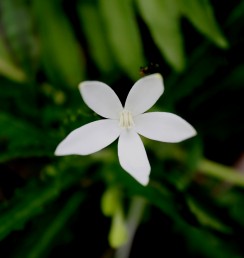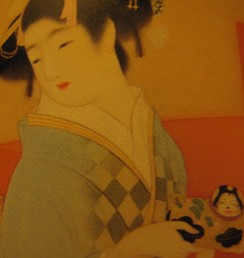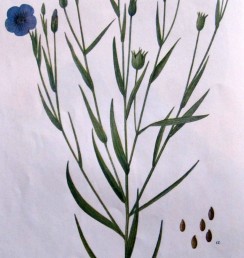Musa spp. – Banana
Musa spp. Eng/Ita: Banana, Indo: Pisang; Swe: Banan
Family: Musaceae
Habitat: Native in the tropical forests of of south east Asia, now present in all tropical regions of the world over 127 countries. Grows in the sun, in different kinds of drainage soils, at least 60 cm deep. The plant as a whole is perennial, but the aerial part of the plant dies out after fruiting, new offshoots will developed from the base of the plant and ‘recreate’ a ‘tree’. The banana plant is an herbaceous plant not really a tree. It is the largest flowering herbaceous plant. There are many types of bananas, some are edible some are not.
Constituents: Carbohydrates, Proteins, Fat, Vitamin B 123469, Vitamin C, Vitamin E, Choline, Manganese, Magnesium, Iron, Potassium, Phosphorus, Selenium, Sodium, Zinc, Fluoride.
Actions: anti infective, anti ulcers, anti oxidant, anti depression, nutritive, hypoglycemic, astringent.
Uses:
Medical uses: Banana fruit is rich in nutrients, such as vitamins, proteins, minerals and more. It is useful in case of malnourishment and anorexia. Banana has been used in the treatment of gout and high cholesterol, ulcers, dysentery and migraine. The high potassium content prevents cramps and pains. Some kind of bananas contains high level of serotonin, which makes banana beneficial to the heart, smooth muscle and in case of depression. Some researches shows Banana improves dopamine production, therefore can be used to support Parkinson conditions and depression. Its zinc content makes it useful for skin infections, hair loss, and male fertility problems. The peel is used for testosterone induced prostate-enlargement. Researchers have shown blood sugar lowering properties of the Banana flower extract in type 1 diabetes and has also been found to have antioxidant actions. Banana root extracts have been found to have blood sugar lowering properties too (comparable to the drug glibenclamide). Also, unripe banana contain starches resistant to hydrolysis, hence suitable for diabetics. Eating banana has protective effect against loss of skin elasticity.
Indonesia: The root juice of Pisang Kopok is used as remedy for menorah and excessive bleeding. The juice of the stem is used for renal stone, for snake bites and for afterbirth bleeding. The young leaves are applied topical to wounds and to cool inflamed eyes. Some types of banana are: Pisang kepok; klutuk; swangii; tungkat.
As food: banana fruit can be eaten raw but also cooked, fried, etc. The banana fruit can be dried and eaten as snacks or made into flour. The banana leaves are used as ‘wrap’ to steam rice in and other foods and desserts. The banana flowers can be eaten as vegetables, in soups and curry or fried. Usually the ‘heart’ of the flower is used.
Other uses: The leaves are water resistant and are used as eco friendley umbrellas, plates, cups and decorations. The fibers of the banana stem and shots are used to make textiles, there is a long tradition of this in Japan. The stem is also used to make paper. Banana peel can be useful as purification and for the extraction of heavy metal contamination from river water. Cuts of Banana trees can be used as compost. Leaves can be used to make layers for a natural water pond.
by Xilef Welner
Plants











